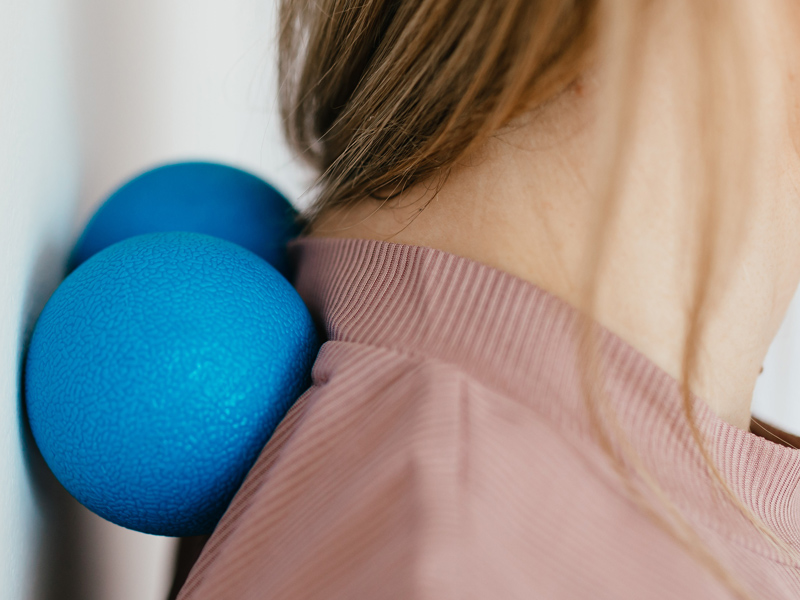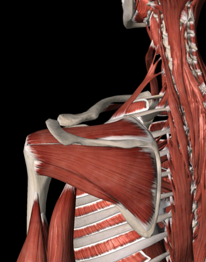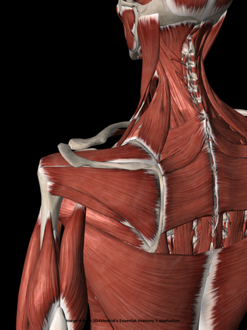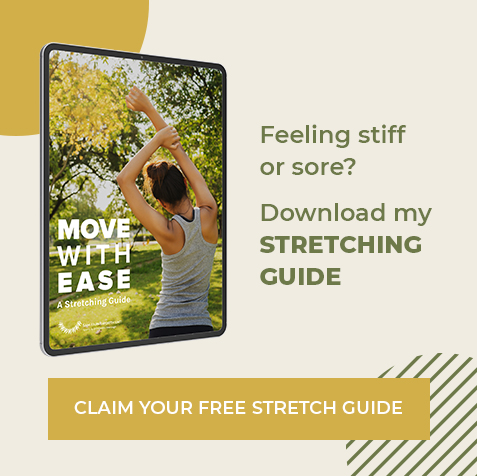Shoulders sore? Stiffness in your upper back, neck? Want something simple to do for your shoulder health to feel better?
Here is the punch line: HANG. Hanging is simply one of the best things you can do for shoulder health. Hang from a chin up bar, hang from a tree, hang from the jungle gym. Our shoulder muscles were meant to be used this way and most of us never think to hang!
(My one caveat – if you are seeing an orthopedist for a shoulder issue, talk with them first)
Otherwise, what follows is a discussion of why this simple action can be so beneficial to shoulder health.

Benefits of Hang Time to your Shoulder Health
In my practice, I see a lot of folks with shoulder pain. It can take many forms – pain in the front of the shoulder, raising an arm, between the shoulder blades, or up into the neck. The reasons vary, but common issues result from:
- Loss of strength due aging or a history of shoulder pain/injury.
- Or loss of strength due to focus on strengthening legs (like runners, bikers, me)
- On the other hand, years of over use (swimming or working with your hands overhead)
- Using arms in one way – hands/arms in front of body, like sitting at a computer.
Like so many things it often comes down to repeated patterns of movement without much change. So why is the shoulder vulnerable?
Anatomy Background (it’s complicated)

Our shoulder joint is simply the most vulnerable joint in our bodies. Because there is no bone attached to bone – secure joint at the shoulder – like there is at our elbow, or at our hip.
- Two bones make up the shoulder joint, the big bone in the upper arm (humerus), attaches to the shoulder blade (scapula).
- The shoulder/shoulder blade (glenohumeral) joint is like stacking one plate on another. Very shallow, no ball in socket.
- The “joint” is held together by the “rotator cuff” muscle tendons and ligaments. There are four (fairly small) muscles that make up the rotator cuff. This is the portion of the shoulder most vulnerable to injury (Picture 1).
- But not all shoulder pain originates at the rotator cuff: it can be more complicated, because – the shoulder joint does not attach your arm to your body!
- The muscle tendons and ligaments that attach to the shoulder blade and collar bone (clavicle), attaches your arm to your body (rib cage).
- And like the shoulder joint, there is no joint that the shoulder blade fits into.
- Finally there are many muscles that attach your scapula to your body (Picture 2).

So, simply put, “shoulder pain” can encompass many muscles. From your low back to your neck, over your shoulder to your chest and down around your ribs. That’s a lot.
Muscles like lats, pecs and traps, biceps, triceps, as well as the rotator cuff muscles can all benefit from hanging.
Next Up – Evolution
This is perhaps easier for me to visualize because I have a geology degree and everything in geology is in millions of years. But indulge me, as cultural and scientific evolution is outstripping our physical evolution. By a mile. And in my mind that explains a number of our physical ills.
We don’t have to go back that far for humans, but I will try to convey my point in a few bullets:
- First IPhone – 2007
- First home computer – 1974 (not in my home!)
- In 1910 more than 50% of the US population performed physical work: forestry, mining, construction, manufacturing, etc. In 2015, it was less than 20% (fascinating graph: https://www.bls.gov/opub/ted/2016/employment-by-industry-1910-and-2015.htm)
- And the Industrial Revolution started in 1760.
To put a finer point on this, remember that our species, homo sapiens, is perhaps 150,000 -500,000 years old.
What’s my point??
In roughly 250 years, or approximately 12 generations, we have gone from being a very physical species to a very cerebral species. Spending our time in front of a computer or cash register instead of planting fields, harvesting, hunting, building by hand, etc.
Many are aware of the toll this has taken on our cardiovascular health with the rise of obesity, Type 2 diabetes and heart disease. But it also affects our physical selves. Backs, shoulders and hips lose mobility, get sticky and discomfort increases. The shoulder is designed to move in three planes and combinations of all three. We need to maintain movement as we age, or we will gradually lose it – particularly overhead.
- Pushups are great for shoulders, but they should not hurt. Modifications can include doing them on your knees or tucking your elbows inn tight to your sides.
- This video demonstrates excellent exercises for your shoulders and upper back: Ts Ys Is Ws.
- Finally, a hanging routine can include just hanging, or hang for 30 seconds, then do one pull up, hang again for 30 sec, pullup, etc. Even doing this through one pullup can be challenging, but strength builds with time.
So stay active. Stay strong. And hang in there. It can help upper back, neck, chest AND shoulders.
Move with Ease. Sam
Want to hear it from Dan John, one of the best strength and conditioning coaches? Check out him out here.
Want more on shoulder health? Check out this book.

